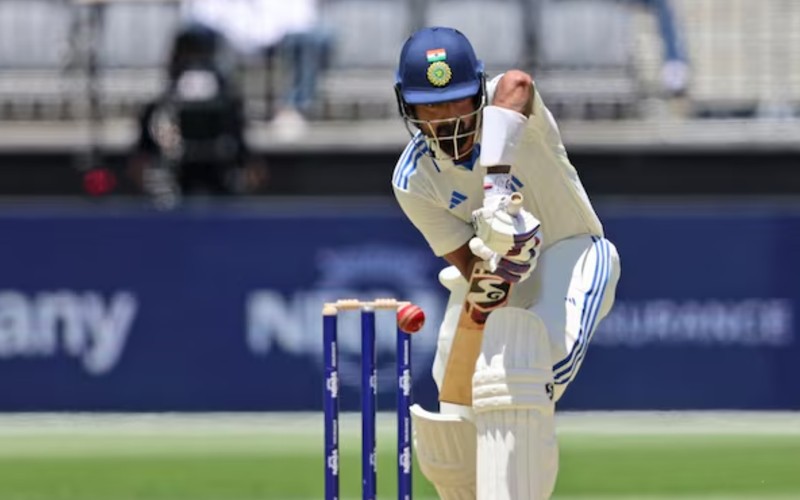On November 22, India challenged Australia in the opening Test of the Border-Gavaskar Trophy at Optus Stadium, Perth. Stand-in captain Jasprit Bumrah won the toss and chose to bat first. However, the Indian top order faced difficulties in establishing themselves, quickly landing in a tough spot. Yashasvi Jaiswal’s debut was a short one, as he was dismissed for a duck, while his opening partner KL Rahul showed resilience in defence, leaving balls outside off-stump and holding up one end.

However, his resistance was short-lived. Devdutt Padikkal followed suit and also went back to the pavilion for a duck, and Virat Kohli, struggling for form, was dismissed cheaply for just five runs. KL Rahul’s dismissal became a point of contention. Mitchell Starc bowled a fuller delivery that angled outside off-stump, and the Australians immediately appealed, claiming that Rahul had edged the ball.
The on-field umpire ruled Rahul not out, but Australia decided to challenge the decision using DRS. The review showed a spike on the snicko graph as the ball passed the bat, but there was no definitive evidence to overturn the original call. Despite this, the third umpire decided to rule Rahul out after reviewing only two angles of the incident, sparking controversy.
WATCH – Nitish Reddy Reflects On Gautam Gambhir’s Inspiring Message
Former umpire Simon Taufel weighed in on the situation, clarifying that the camera angles shown to the third umpire were misleading. He explained, “Umpires are looking for conclusive evidence. There were a few gremlins at the start of that review… Richard Illingworth had a tough job there, but this camera angle is probably the best one for me. It shows that the ball does graze the outside edge, which has caused the scuff marks, but then the bat goes on to hit the pad.”
Simon Taufel: “We saw with that side on shot there was a spike on RTS with the bat away from the pad, in other words the bottom of the bat hadn’t reached the pad.
“Therefore rolling that through in its natural course, you may have seen that second spike (on Snicko, to indicate… https://t.co/tY5yCYYE6s
— 7Cricket (@7Cricket) November 22, 2024
Taufel suggested that this could have caused confusion, with Rahul and the on-field umpires perhaps interpreting the spike as a result of the bat hitting the pad rather than the ball grazing the edge. Matthew Hayden, the former Australia cricketer, also shared his opinion, advocating for the benefit of the doubt to be given to the batter in such cases. He pointed out that the snicko could have picked up the sound of the bat hitting the pad after the ball had passed the edge, which is a plausible explanation for the spike.
ALSO READ: Jasprit Bumrah’s Bowling Masterclass And Sanjana Ganesan’s Cheeky Praise Go Viral
“His pad and bat are not together at that point in time as the ball passes. Does Snicko pick up the sound of the bat hitting the pad? We’re assuming it’s the outside edge of the bat, but that may not be the case,” Matthew Hayden argued.
Rahul, visibly disappointed, walked off the field after the DRS decision went against him. He had scored 26 runs off 74 balls, and the controversial decision left many questioning the fairness of the review process.
